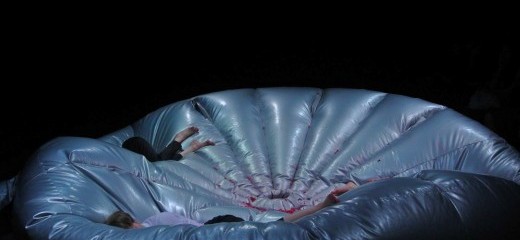
Bulgaria on the map of European Dance – a personal journey in cultural dissociation
by Zornitsa Stoyanova
Personal history and context
I was born and raised in Sofia, Bulgaria. In 2002, at age 20, I left everything I knew because of dance. Back then, there was no contemporary dance education or performance in my country. My parents supported me when I applied and was accepted to study at Bennington College in Vermont. Upon graduating, Bulgaria was not an option, as dance there was stuck in ballet or MTV dance (a term still used in Bulgaria to describe any pop- and hip hop-derived movement). I moved to Philadelphia instead, where I met my future husband while looking for roommates on Craigslist. Our first date was one of Nicole Bindler’s five-hour improvisational scores in 2006 at Mascher Space. Here in Philly, I carved out artistic and family lives performing, curating, and presenting work that shaped me into who I am today.

Shooting a dance film at Mascher Space three weeks before giving birth to my youngest son. Photo by Zornitsa Stoyanova
Sixteen years after emigrating from Bulgaria, I visited Sofia this past March specifically for dance—something I didn’t think would ever happen. Bulgaria was finally on the contemporary performance map, holding three festivals back-to-back—Bulgarian Dance Showcase, Spring Forward Festival, and Spotlight USA. My commitment to going to these festivals was strengthened by the fact that one of my closest friends, Megan Bridge, was presenting work at Spotlight USA, and she was the first of my friends to visit my country. It would be the first time for me traveling alone with both of my children (4 years and 10 months).
Spring Forward Festival is an annual dance festival organized by Aerowaves held in a different European city each time. While this festival is partly open to the public, it is mostly catered towards the 200+ presenters and performance writers from all over Europe who attend. The much smaller Bulgarian Dance Showcase happened right before Spring Forward, and while all the 200+ presenters were invited, only about 25 were able to come early. Spotlight USA was immediately after in Plovdiv, and I was not able to attend. I attended the first two festivals in Sofia as Programs Administrator at Mascher Dance and writer for thINKingDANCE.
Preparing
I am continuously training myself in dissociating my aesthetics from my critical self while watching dance. “Not liking” something has become “this is not for me” or “I am not its targeted audience.” Interrogating the intention of the choreographer, comparing it to the performance itself, and looking at the dramaturgy (or lack thereof) is how I feel fulfilled when I watch dance. I keep reminding myself to keep my critical mind in the foreground, while preparing to watch more than 20 performances in five days.
I was also excited to rub shoulders with all the European presenters, talk to them about sustainable art practices, and learn how they do programming in their countries—information I could use at Mascher Dance. For the first time, I felt that I was not the artist begging to be recognized, but rather someone who had information, energy, and resources to offer and exchange with others in Europe. My mom self, though, was cringing with scheduling nursing sessions in between shows and figuring out how to get home before my youngest woke up to nurse at midnight.
Pumping breastmilk during a break between shows and walking from a theater in a snow storm. Photos by Zornitsa Stoyanova
Bulgarian Dance Showcase
Due to scheduling conflicts with my 10-month-old son’s nursing sessions, I was only able to see five of the seven Bulgarian performances from six different choreographers. Golem by Anna Dankova and Shame Box by Willy Prager and Iva Sveshtarova especially impressed me. Theatrical and familiar to me structurally, both shows had impeccable design and costumes, strong dramaturgical vision, and beautiful execution.

Golem by Anna Dankova. Photo: Stefan Zefirov
Golem started with a silver circular inflatable taking up the entirety of the small stage. Slowly, one by one, three identically dressed and wigged women emerged onto it. They crawled in slow circles toward the dipping middle, reminding me of worms unknowingly going towards the mouth of a shiny underwater predator. It took me a long time to notice that all the performers were chewing. The chewing became the piece, their mouths filling with what looked like red gum squares coming from hidden pockets in the inflatable. The action became intriguing, sensual, sexual, and eventually grotesque and perverse as they overstuffed their mouths getting pleasure only from chewed gum taken from another’s mouth. The show ended with one performer coming out of the inflatable choking and spitting red. Perhaps a little too long and heavy-handed at the end—I was fed up. But maybe that was the whole point.

Golem by Anna Dankova. Photo: Stefan Zefirov
Shame Box, performed by Willy Prager and Iva Sveshtarova, was titillating. Both sitting on stage, they started the piece by nodding their heads down in unison as if in shame. This action got repeated and developed into a rigorous rhythmic duet. It resolved as both sat jerking on chairs, while spilling milk down their throats. By now wet and with mouths filled with milk, they finally stopped shaking, only to play “who’s milk spittle is going to shoot further.”

Shame Box by Willy Prager and Iva Sveshtarova Photo: Boriana Pandova
Often funny, every scene in this performance was designed to have a sexual metaphor. Sveshtarova threw eggs at Prager’s exposed ass, never to reach their target but smash on the floor. Both broke eggs in their own mouths letting them spill sensually.

Shame Box by Willy Prager and Iva Sveshtarova Photo: Boriana Pandova
Later, they lip-sang wearing what looked like lips cut out from a sex doll. Each held a live cam chat room where seemingly random people asked them to perform sexual acts. The piece ended with both singing horrendous, out of harmony repetitions of the words “love me.” Using images of sexual shame and desirability in pop culture, they crafted an experience of discomfort, arousal, humor, and ultimately desire to fit in and be loved.
The other three performances I saw were alike in their abstract modern dance construction. The shared aesthetic can possibly be explained by the close relationships of all the choreographers. Jivko Jeliazkov, artistic director and choreographer of Derida Dance Center presented his piece S INNER. Marion Darova, one of Jeliazkov’s dancers, showed Trauma. Hristo Ushev, Vasil Zelyamov, and Tsveta Doycheva, students of Jeliazkov at Derida Dance Port, presented Mindfuck, their first ever dance piece.
Influenced by the dark nature of the human mind and all using click-y ambient electronic music, S INNER, Trauma, and Mindfuck, as their names suggested, felt like a trilogy of the same work.

S INNER by Jivko Jeliazkov. Photo: Yana Lozeva
S INNER was clearly the most realized and rehearsed performance of the three. (It won the Bulgarian award for performance, Ikar 2017 – the Bulgarian version of the Bessies.) An all-female cast, it developed slowly, presenting a dark and tortured world. With semi-naked contorting bodies and mirrored pneumatic movements, at times the images took my breath away. Halfway through the piece, the staging shifted as leather accesories and fur clothing were put on stage. One dancer got into a fur coat only to come out shortly. Another dancer contorted backward, while her leather clad legs continued to propel her forward. The fur coat, fur hat, leather bag, and leather legs in leather boots up to the thighs, combined with the earlier toplessness, reminded me of a deconstructed image of an 80’s prostitute.

S INNER by Jivko Jeliazkov. Photo: Yana Lozeva
I was taken by surprise when a recording of a male voice, spoken from the perspective of an animal, talked about the cruelty of animal fur harvesting. When one of the performers started peeling a beauty face mask off her face, I was sure I was watching two separate performances. The theatricality of the second half contrasted with the movement-heavy first half so much that I had trouble relating them to each other. Perhaps this was an attempt at finding a relation between how we treat animals for fur and how society treats women? This piece, while visually appealing, left me with many questions about the choreographer’s choice of costumes and dramaturgical direction.

Trauma by Marion Darova. Photo: Yana Lozeva
Trauma also presented an all women cast—a meditation on being dominated and quietly violent towards each other, while presenting a generalized image of sexiness. As someone whose work is focused on feminist ideas and empowering the female body on stage, I felt that this piece was “not for me,” as I didn’t find it revealing or transformational. At times unfolding too slowly, the performers were locked in tension, fast movement shifts, and dramatic expressions. I couldn’t join that journey, as I had no reference of why or how these women got there. Trauma needed editing, dramaturgical direction, and a costume designer, elements Marion Darova can address in future work as she clearly has potential.

Trauma by Marion Darova. Photo: Yana Lozeva
Mindfuck was predictable, but also refreshing. Maybe I was more open to this work because I knew it was a first choreographic effort. The movement was unsurprisingly similar in quality to the previous two pieces—tense bodies and fast movement shifts. I appreciated that the choreographers attempted to make a trio between two men and one woman that was not a love triangle. With abstract projection and all white costumes, floor, and walls, it contrasted with the previous two pieces’ black-clad dancers in a black box theater setting. I will be excited to see how Ushev, Zelyamov, and Doycheva continue their careers as they find their unique movement style and aesthetic.

Mindfuck by Hristo Ushev, Vasil Zelyamov and Tsveta Doycheva. Photo: Yana Lozeva
The two other pieces in the Bulgarian showcase I didn’t see were Yellow by Petar Todorov and Desislava Mincheva—a show for young audience 0-5 years old—and FLAPSE, also by Jivko Jeliazkov.
Assessing the showcase
Organized by Derida Dance Center, with support from the Goethe Institute in Bulgaria and guest cultural manager Katerina Vasiliadis, who helped with the selection of the choreographers, the Bulgarian Dance Showcase was a monumental opportunity for choreographers to be seen by presenters from across Europe. Yet, knowing other artists making work in Bulgaria, I question the selection process. Neither big names in Bulgarian dance like Galina Borisova and Violeta Vitanova, nor smaller independent makers from cities like Varna or Burgas were included.

Talking with Márta Ladjánszki and Zsolt Varga from L1 Association, Hungary at Derida Dance Center. Photo: Yana Lozeva
Willy Prager and Iva Sveshtarova have run the Antistatic Festival of contemporary performance in Sofia for the last eleven years. This festival has without question shaped the cultural understanding and presence of contemporary dance in Bulgaria. In 2012 Derida Dance Center opened a free, one-year contemporary dance education, and since there is nothing like it anywhere else, many younger generation dancers and makers in Bulgaria attend it. The few chosen for the showcase certainly had a long history with establishing contemporary dance in Bulgaria, and yet they did not represent the overall climate of Bulgarian dance. I understand the limitations of budgets, timing, and available performers, but I wish the organizers were more transparent with their curatorial process.
Trying to make sense of it
All five performances explored dark human emotions and states. My artist self would call that “(over)serious art.” Shame Box, using humor, was the only exception. Could the dark themes be a national phenomenon or just a reflection of the curator’s aesthetic? Performances suggested neither a positive or transformational outcome, instead only revealing more of the same world.

Waiting for a show to start at DNK space. Photo: Yana Lozeva
On a walk between shows I got a chance to talk to with a few other presenters. Some, including myself, felt intrigued and confused by the showcase. In the U.S., where contemporary performance has gone through the Judson era and moved toward activism, I couldn’t watch these shows without thinking about gender disparity and the politics of the body. The aesthetics of some of the performances were reminding me of classic modern dance, yet there was something new, unnamed, and specifically Eastern European. Knowing that some Bulgarian artists are dismissive of U.S. work because they perceive it as only about gender and race, I am curious about how and if an overall national aesthetic would develop. Would work in Bulgaria be focused only on the emotional content in the body, or would it ever address the problematic politics, gender, and race disparity locally and globally?
If I could make an assessment about Bulgarian dance based on this showcase, I would say that makers are obsessed with self-mutilation, self-deprecation, and exploration of the negative emotions of humankind. Like an angsty teenager, Bulgarian dance is growing, and I hope the world gets to see more varied and emotionally fulfilling performances in the years to come.
Bulgarian Dance Showcase, Derida Dance Center, Sofia, Bulgaria, March 21-23.
tD will also publish an article by Zornitsa on the Spring Forward Festival.
By Zornitsa Stoyanova
May 9, 2018

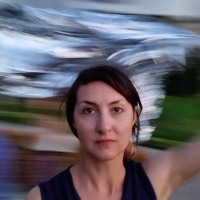
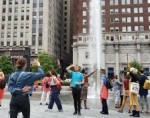
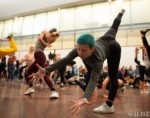
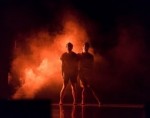
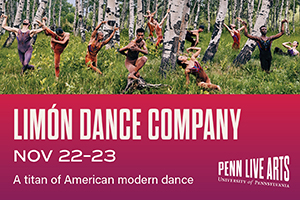
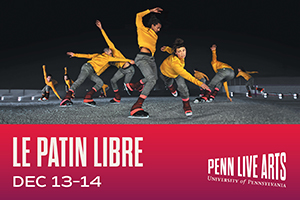
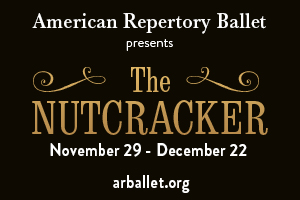
.png)


